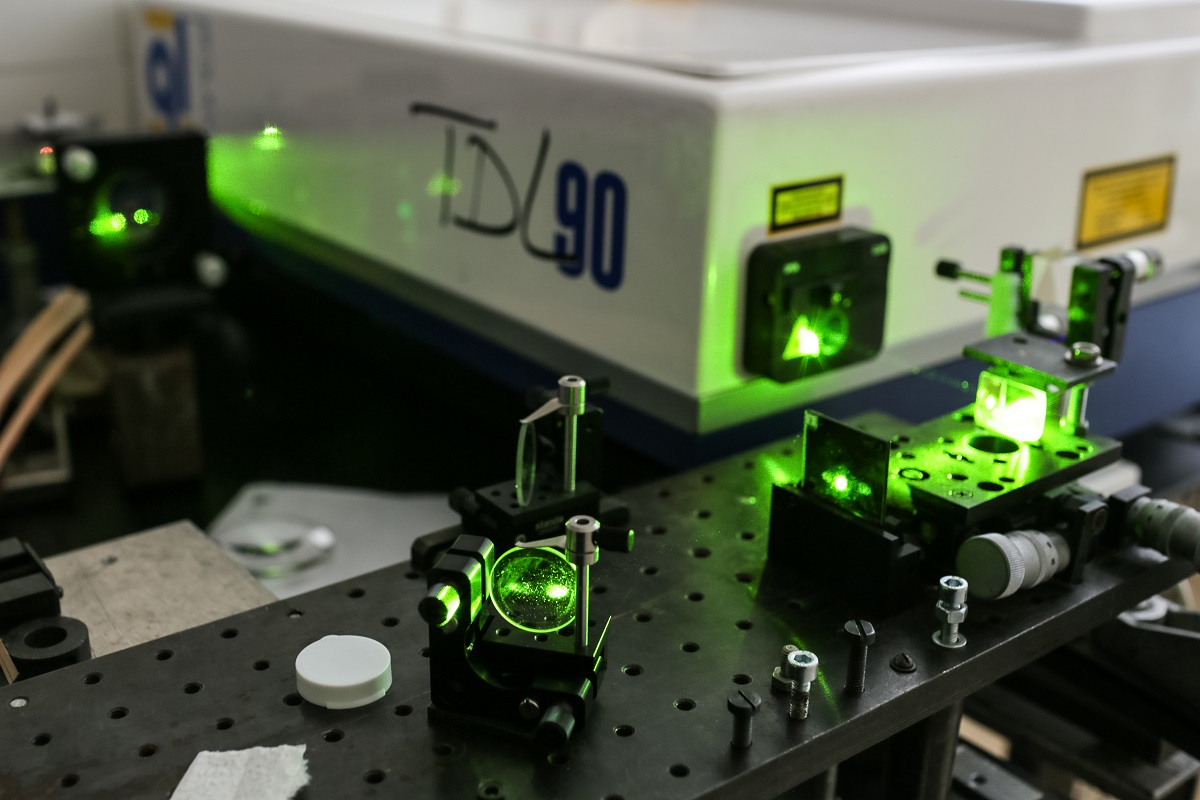A discovery of St Petersburg University physicists will help to study weak bonds between molecules

St Petersburg University physicists were able to detect radiation upon excitation of weakly bound complexes of halogen molecules with inert gas atoms and for the first time to prove that it belongs to the complexes themselves.
The graphical abstract from the article describing these results, according to the decision of the editors of the journal Chemical Physics Letters, is placed on the cover of the scientific publication.
Water, ice and water vapour, as it is known, consist of the same molecules - H2O, but nevertheless these substances differ markedly from each other. Their difference is largely due to the fact that there is a certain bond between the molecules that attracts them to each other. If the interaction is strong, then a chemical reaction occurs; for example, two hydrogen atoms and an oxygen atom form a water molecule. If the interaction is weak, as between water molecules, then the form of the aggregate state of the substance depends on it. It can be liquid, gaseous or solid.
The research group of St Petersburg University under the leadership of Professor Anatoly Pravilov focuses on van der Waals (VDW) forces, which is one of the types of weak intermolecular bonds. Scientists investigate the simplest VDW complexes consisting of atoms of inert gases (helium, neon, argon and krypton) and iodine molecules. Researchers are interested in how the bond strength in the complexes and their decay depend on the polarisability of inert gases. In order to study complex molecular systems, we must first understand how the most simple ones are arranged.
To get airborne complexes is possible only at ultra-low temperatures. The St Petersburg University physicists use an experimental unit they developed in 2015. It "discharges" a gas mixture of iodine and inert gas molecules into a vacuum in order to produce a supersonic molecular beam. In these beams, the atoms and molecules are cooled to low temperatures, about 1 K (-272 ° C), and as a result, VDV complexes are formed in unexcited states. They are translated by means of lasers into an excited, so-called ion-pair, state. Further, this excited complex evolves: it decays into an inert gas atom and an iodine molecule in this state (adiabatic decay) and evolve into other excited states (non-adiabatic decay), which, in their turn, also decay. Analysing the decay products of complexes, one can study the processes of their evolution.
The St Petersburg University researchers managed to register the radiation of the VDW complexes. It turned out that this radiation is very similar to the emission of free iodine molecules, but there are also differences. "We know that the iodine molecule radiates within 26 nanoseconds in the ion-pair state that we are populating: this is the time of its life, we can say, its passport data, according to which scientists understand that it is iodine that they are observing in this excited state," explained Associate Professor Sergey Lukashov, Candidate of Physical and Mathematical Sciences. "We were able to detect radiation when the NeI2 complex was populated, which lasted eight nanoseconds in cases when the adiabatic decay of the complex was impossible, and approximately one nanosecond when it was possible. This is a direct proof of the presence of luminescence of the NeI2 VDW complex."
Anatoly Pravilov, the head of the research group, noted that the results obtained are of great importance for theoretical physics, because they can be used to study the dynamics of internal transformations in similar complexes. "They need to be studied, because they are the simplest ones. If we deal with them, then, in the end, we will be able to explore and describe more complex structures, for example complexes of biomolecules," said Anatoly Pravilov. "In addition, the processes associated with VDW complexes are taking place in the Earth's atmosphere or, say, in the interstellar space, where chemical reactions take place under completely different conditions - at low temperatures and under conditions of intense ultraviolet radiation."

